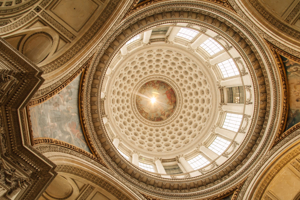Surprise deregulation of New York's auction market: what, why and what next?
The art market is commonly conceived (or rather misconceived, we think) as the last bastion of unregulated business. However, in a rare step against the currents of increasing regulation, New York City Council has deregulated aspects of New York’s auction market, rolling back decades-old regulations which:
- Required auction houses to be licensed by the city;
- Prevented auctioneers from taking bids from phantom bidders in the room above the reserve price (i.e. “chandelier bidding”); and
- Required auction houses to reveal auction house guarantees or third-party irrevocable bids.
The apparent purpose of the deregulation is to stimulate business post-pandemic, but there are several surprising aspects to this.
First, the deregulatory measures targeted smaller industries such as laundromats, video arcades and vehicle rental agencies. Why the New York auction market – which is worth billions of dollars and performed admirably over the pandemic – has been put in the same basket as these much smaller businesses is not clear.
Second, the US’s stance towards art market regulation has until now been strong. US restrictions on cultural property and anti-looting laws have led to numerous high-profile seizures and raids, and anti-money laundering regulations are expected to govern the US art and antiquities market by the close of 2023. Indeed on 22 June a new bill (the ‘Enablers Act’) was approved by the House of Representatives Armed Services Committee for inclusion in the National Defense Authorization Act. The result would be the extension of the US’s anti-money laundering laws to “persons who trade in works of art, antiques and collectibles.”
Third, apparently no one in the art market lobbied for the deregulation, which came out of the blue and without consultation.
It is hard to imagine that the deregulation will not damage buyer confidence. An attraction of auction sales is that they are theoretically a real-time gauge of the current market value of any given work, making it less likely a buyer will overpay. The deregulation enables more opacity around auction house and third-party financial interests in consignments, and undisclosed bidding by auction houses above the reserve price, with the potential to artificially inflate the market-value of the work in question.
Auction houses including Christie’s have stated that they do not expect their business practices to change, however the reality is that today more than ever auction houses are commercial businesses chasing profit in an environment of extreme competition, so why buyers should trust promises of continuing (relative) transparency with the fox in charge of the hen house is uncertain.
There are two potential positives from the situation. First, any leakage of buyer confidence in the New York market might result in a benefit to the UK’s art market, which has suffered a decline (albeit it remains the third largest in the world, after US and China) post-Brexit, due in part to the imposition of VAT and other charges on works moving between the UK and EU. Second, it might be that the new lacuna in New York auction house regulations is filled by more applicable, transparent and up-to-date regulations which provide a model for other jurisdictions. The auction market has transformed since the 1980s, with virtual sales to a global buyer base now the norm. Full details on auction house guarantees and third party financial interests have never been easy for buyers to discern, and it might be that this deregulation provides the opportunity for an overhaul which brings art market regulations up to date.
“The truth is, the wink and nudge codes were not really serving their purpose. Anyone walking into an auction room for the first, or even second, time wouldn’t have a clue what was going on behind the numbers.”












